Brief History of Stryi
The first official written mention of Stryi dates back to 1385, when it was already a regional center. Its development was favorably influenced by its geographical location on an important route through the Carpathians (Lviv-Mukachevo). Trade relations with Hungary developed especially intensively.
In the 16th century, the Stryi Castle was built to defend against the raids of nomads. As a defensive structure, it existed until the 18th century. In 1576, Stephen Bathory (King of Poland) officially granted Jews the right to reside in Stryi and guaranteed them equal rights with Christians, a Jewish community was organized in the town.
The Cossack uprising led by Bohdan Khmelnytsky greatly influenced the life of Stryi. In 1648 and 1652, the town was burned. The end of the 17th and the first half of the 18th centuries were devastating for Stryi. In 1699, the town was burned down during the Crimean Tatar raid. During the 18th century it survived several major fires (1701, 1708, 1712, 1738, 1742).
In 1772, after the first partition of Poland, Stryi became part of the Habsburg possessions (from 1804 - the Austrian Empire, from 1867 - the Austro-Hungarian Empire). The population consisted of Jews, Poles and Ukrainians - approximately one third each. In the middle of the 19th century, the town turned into a significant railway and gas industry center, which contributed to its rapid development.
More Historical Facts…
April 17, 1886, the largest fire in the entire Stryi history destroyed most of the town. After that, the Lviv Polytechnic Society developed a plan for the regulation of local urban development. From the end of the 19th century, Stryi was one of the most important centers of the Ukrainian national movement in Galicia.
Under the Riga Peace Treaty of 1921, Soviet Russia and Soviet Ukraine recognized Stryi as the territory of Poland. In 1939, the national composition of the population was the following: Jews - 35.6%, Poles - 34.5%, Ukrainians - 28.0%, Germans - 1.6%.
September 17, 1939, the Red Army of the Soviet Union occupied this territory of eastern Poland. September 28, 1939, by the Treaty of Friendship and the Border between the USSR and Germany was signed, according to which the town of Stryi became part of the USSR. October 27, 1939, Soviet power was established in Stryi. November 14, 1939, it became part of the Ukrainian Soviet Socialist Republic.
July 2, 1941, German troops occupied Stryi. In mid-November 1941, a large part of its Jewish population was shot in the forest near the town. September 3, 1942, about 5,000 Jews were moved to the Belze? extermination camp. August 5, 1944, the town was liberated by Soviet troops.
After the Second World War, Stryi became a major industrial and transport center. The national composition of the local population radically changed. In 1959, it was the following: Ukrainians - 68%, Russians - 30%, others - 2%.
March 14, 1990, when the USSR still existed, Stryi became the first Ukrainian city where the flag of independent Ukraine was raised. In 2003, Stryi was recognized as the best district center of the Lviv region.
Stryi - Features and Sights
Most likely, the city received its name from the name of the Stryi River, one of the largest tributaries of the Dniester River, on the banks of which it was founded. The name of the river means “flow”, “flowing water”.
The climate is temperate continental. Summers are cool, the average temperature in July is plus 18.0 degrees Celsius. Winters are relatively warm, with frequent thaws, the average temperature in January is minus 4 degrees Celsius.
Stryi is a large railway junction of the western part of Ukraine (5 directions - Lviv, Mukachevo, Drohobych-Sambor, Khodorov, and Ivano-Frankivsk). The industry in the city is represented by the following industries: engineering, metalworking, woodworking, light, food, printing, and manufacturing of building materials.
Today, there are about a dozen museums in Stryi.
The main museum of the city is the Museum of Local Lore “Verkhovyna” located in the former house of the Stryi lawyer, social and political activist E. Olesnytsky. In the beginning of the 20th century, it was a hotbed of Ukrainian culture and social life.
In total, there are about 26,000 exhibits. The exposition consists of 3 sections: nature, ethnography, history of the region. The most valuable exhibits are old books, icons, Boykovsky and Hutsul Easter eggs, as well as weapons of Cossacks. There is a separate exhibition devoted to the Ukrainian Insurgent Army of the Second World War times. Olesnytskoho Street, 15. Opening hours: 09:00-17:00. Day off: Saturday.
Memorial Complex “To the Fighters for the Freedom of Ukraine” opened on the territory of the former Stryi prison, which operated from 1898 to 1963. The exposition of this unique museum is dedicated to people imprisoned here in different historical periods.
The complex includes a symbolic forged fence, fragments of walls with barred windows, a guard tower, an entrance arch with a crown of thorns, a two-story museum building, a wall of sorrow, a sarcophagus grave. Olesnytskoho Street, 4. Opening hours: 09:00-17:00. Days off: Wednesday, Saturday.
Museum of Stepan Bandera. The family museum of the prominent Ukrainian political figure Stepan Bandera was opened in Stryi to the 101st anniversary of his birth. The exposition, mainly devoted to Stepan’s school years, is located in the house of his grandfather M. Bandera, in which he lived while studying in the Stryi gymnasium from 1919 to 1927.
Also, the exposition of the house-museum tells about all members of the Bandera family, each of whom in one way or another joined the struggle for Ukrainian independence. You can see various documents, photos, personal belongings. Lvivska Street, 20. Opening hours: 09:00-18:00.
Architecture of the historic center of Stryi
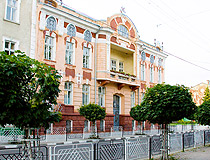
Stryi city architecture
Author: Lyubomir Shevchuk
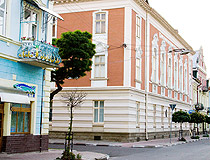
In the center of Stryi
Author: Lyubomir Shevchuk
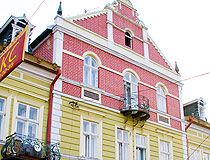
Bright colors of Stryi
Author: Lyubomir Shevchuk
Museum of Peter Obal. From 1942 to 1987, Peter Obal, a landscape painter, portraitist and graphic artist, lived in Stryi. The exposition is based on a selection of his works, archive and personal belongings kept by his daughter. Opening hours: 09:00-17:00. Day off: Saturday. Tarasa Shevchenka Street, 107.
Museum of Literature and Musical Association “Waves of Stryi”. The museum was created to promote the works of local artists in 1976. In total, there are about 600 exhibits: books, graphic works, Ukrainian folk embroidery, glass art, etc. Ostapa Bobykevycha Street, 5.
There are more than 100 architectural monuments of local significance in Stryi. Here are the main historical and architectural monuments.
Catholic Church of the Nativity of the Virgin Mary (1425) - an elegant Gothic church-sanctuary which is considered one of the main symbols of Stryi. The church was destroyed by fires several times. In 1891, the last major restoration was carried out, an organ was installed.
In 1939, the church was closed, but the building was preserved in Soviet times. In 1995, the church was named the Sanctuary of the Mother of God, the Patroness of Human Hopes. In 2001, Pope John Paul II consecrated the icon of the Stryi Mother of God. 22-ho Sichnya Street, 1.
Orthodox Church of the Archangel Michael (formerly the Catholic Church of St. Joseph) - a church built in Art Nouveau style with elements of neo-Gothic in 1907-1912. Solomii Krushelnytskoi Street, 21.
Cathedral of the Assumption (the 19th century) - the main Greek Catholic church of Stryi. Uspenska Street, 16.
The People’s House - one of the city’s cultural institutions built with Ukrainian funds and opened in 1901; architectural style - eclecticism. Inside, there is a small museum devoted to the history of this house. Narodna Street, 8.
The House of Culture of Stryi (1906) - a vivid example of secession with a magnificent decor both outside and inside. In the 1950s, it housed the Stryi Drama Theater. Solomii Krushelnytskoi Street, 18.


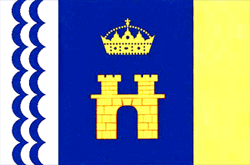
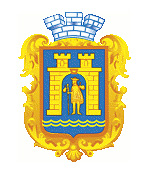



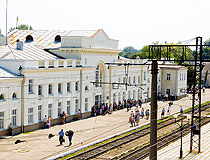
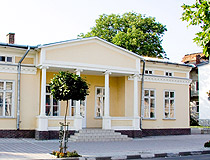
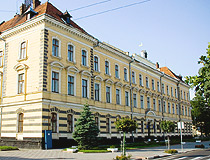
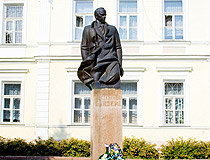
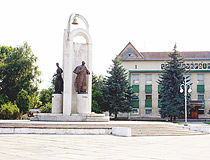
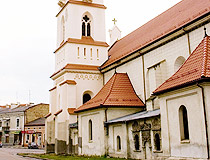
The comments of our visitors